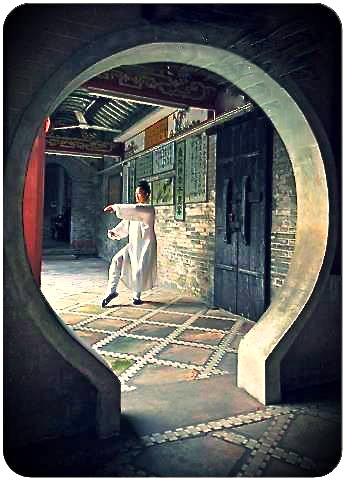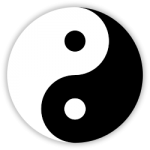Extrapolations of the Su Wen
Chapter 2
On conforming with the
Energy of the Seasons
Extrapolations of the Su Wen
Chapter 2
On conforming with the
Energy of the Seasons
✍️Wendy Brown, Lic. Ac.
As a microcosm of the rhythms and fluctuations of the seasons and their elemental factors to which we are inextricably linked, Chinese medicine would consider the result of our health in one season as being a marker of our lifestyle preparations in the previous seasons as well as in the present. With regard to colds and flus, the ability of the immune system to resist external pathogens, be they bacterial, viral, or allergen toxins that result in immune suppression that leaves us ailing and struggling to recover, exists in the strength of ‘Wei Qi.’

A patient texted me asking how my flu kung fu is: i.e. my thoughts on flu shots. I put together the following from the TCM perspective to share in response. Collage by W.Brown, Lic. Ac.
In Chinese medical theory, Wei Qi is fierce, useful, combative energy from nutrition, says the Lingshu, a medical text compiled in the 1st century BCE, one of two parts of a larger work known as the Huangdi Neijing, the Yellow Emporer’s Divine Classic. Wei Qi is lively and agitated and circulates in superficial tissues, skin, connective tissue, muscles and peritoneum. It radiates to the chest and abdomen. According to the classics, it does not circulate through the meridians but rather flows through the face, trunk, and limbs during the day, and at night through the viscera. Wei Qi protects the body from external perverse energies by opening and closing pores and warming connective tissues. It concentrates at the sites of acupuncture points, the “Holes of Qi,” per se. Wei Qi represents the whole immune system, from leukocytes to anti-bodies, histamine, bradykinin and serotonin.
In Chinese medicine it is an intrinsic reference to discuss “wind gates” and “wind invasion or wind penetration.” The neck, sides of the head, forehead, and upper back according to TCM are conduits whereby externally contracted pathogenic wind can gain entry to the body. Fierce Wei Qi is the primary way the body resists an invasion. Nutritional status, inadequate rest, excessive consumption of alcohol, among other lifestyle factors may lead to the impairment of Wei Qi. It is always advisable to adequately keep wind gates covered, interestingly, in every season to varying degrees. The migration of wind inside the superficial levels of the body can lead to cold and flu symptoms exhibited as chills, body aches, headache, runny nose, congestion, cough and fever. Vulnerability in externally contracting wind is increased by damp hair. We are far more empowered than we may realize in the ways to govern our health and be master of our own unfolding. The timeless ways of Traditional Chinese medicine can be an invaluable guide to reeducating our modern misconceptions and to show us the way.
![]()
Further reading on Wind
With all best wishes for a healthy cold weather season!
✍️Wᴇɴᴅʏ Bʀᴏᴡɴ 文婷中医
Winter Solstice · Dong Zhi · 冬至 · Qi Node begins on December 21st – 22nd
This is the point in the year where the extreme of Yin energy is upon us, and hence, in the Universal balancing of Yin-Yang, Yang begins its return. In so, we enjoy the increasing presence of light. Warmth, rest, and reflection puts us in harmony with the contractive Yin nature of Winter. Keep Yang Qi strong by avoiding prolonged exposure to cold. Eat warming, nourishing foods. Sleep, but not too long as too much sleep produces too much Yin. Move, but in a gentle manner, as with T’ai Chi Chuan and Gentle, Yin, Restorative yogas. Mindfully preserve Kidney Essence and keep a conservative perspective with regard to bedroom activity. Introspection is called for. Contemplate your forthcoming life, reveling in the austere beauty of this moment and season.
 Heaven engenders water to make Earth fertile.
Heaven engenders water to make Earth fertile.
Water dwells in the North, is the season of Winter, and among viscera pertains to Kidney.
Water represents the elemental trigram of Kǎn☵ in the iChing Book of Changes.
Water flows onward, uninterrupted, reaching its destination.
“Being sincere, one has purity and thus meets with success.”
Well-Wishes, Health and Light to All.
It is a common motivation of most living creatures to want to be comfortable. The Chinese character for “comfort”, 舒, depicts the character 舍(Shě) on the left side of the pictograph, which means “to give up, or abandon.” On the right side is the character 予(Yǔ), meaning, “to be bestowed.” The word “comfort” in literal translation means that when one gives up self-serving pursuits and seeking to gratify one’s self, s/he finds peace of mind and comfort. Through the temporary discomforts of releasing, we are brought the support of comfort and renewal.
“Take a step backward, and the ocean and sky will open up to you.” Let go of self-oriented desires and find unexpected treasures.

Heaven follows the momentum of the Tao; Earth follows the laws of Heaven; Human beings follow the laws of Earth.

In this ordering of Universal energy, we are both followers of and co-creators in the flow. With our life-force we create momentum and thus destiny.
 Through our Jing, Qi, and Shen we bring the presence of balance or imbalance to self and surroundings.
Through our Jing, Qi, and Shen we bring the presence of balance or imbalance to self and surroundings.

Qīngyuán Shan 清源山, formerly North Mountain, with atmospheric clouds rising amongst peaks, became known during the Tang dynasty and reached a peak in reputation between 1297 to 1911. The centuries of reverence of this place have imparted 9 Taoist sculptures and hundreds of stone carving relics. Li, one of the the legendary eight immortals, roamed the winding paths amongst the dark green pine and cypress. When Li placed his iron crutch onto mountain rock a spring issued forth revealing one of numerous clean, fresh springs of Qīngyuán Shan.

· The hands teach us not to be selfish.
· The mouth teaches us to give thanks in word and song.
· The nose teaches us to learn from our environment.
· The eyes teach us to show compassion and sincerity.
· The ears teach us to keep our balance.
· All parts of ourselves both give and receive.
Acupuncture Points are sites on the body where acupuncture needles are placed, tuning in to the viscera as well as energetic governances. Acupuncturists, as well as Marial Arts Practitioners as well as Tuina, Shiatsu, and other light-body-workers guide QI by using the layout off points of energy along these meridians. The ‘Cun’ is one aspect of point location used to find acupuncture points, a measurement relative to the proportions of each patient’s body. From a research stance, acupoint sites measure higher electrical charge and conductivity, as well as being concentrated neural and vascular conduits.